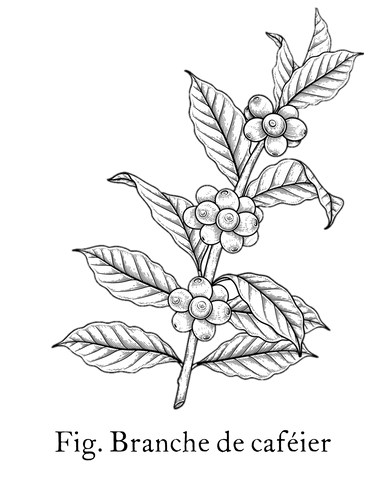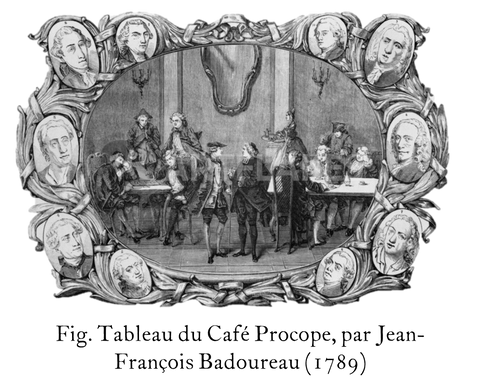Where does coffee come from?
Although omnipresent in France for several decades, its history is rather vague in the collective consciousness, and the image we have of it is mainly that conveyed by major brands through advertising. Here are some points worth noting.
Origin of coffee - nf
Although there are many legends throughout the ages surrounding the discovery of coffee, the wild coffee plant, called C offea arabica is a native plant discovered in 850 in Ethiopia in the Kaffa region.

A gradual, global expansion followed, beginning in 1450 with the first trade in this commodity in the Yemeni port of Mokka. Coffee conquered the Arab countries with its stimulating effect, which earned it the name "qahwah" (the stimulant). The Ottoman Empire held a monopoly on it until the 17th century.
When coffee arrived in Europe via the Netherlands in 1616, it quickly spread to France and reached the court of King Louis XIV, Italy, England, and Spain. Coffee houses began to open in major cities, including the famous Procope in Paris in 1686, which is still in operation today.

This period also marks the entry point for coffee cultivation in European colonies. The Dutch exported it to Indonesia, the French to the West Indies and Réunion, and the Spanish to Colombia and Guatemala. Coffee became widely available in the 18th century. The plant is now cultivated in most subtropical areas of the world. The term "coffee belt" is commonly used to describe the area around the equator where coffee cultivation is possible.
Evolution of coffee - nf
From the 20th century onwards, Brazil quickly became the world's largest coffee producer, accounting for 75% of global production in the 1910s. Production is more fragmented today, but Brazil still accounts for 1/3 of the total, or nearly 2.7 million tonnes per year, followed by Vietnam (1.5 million tonnes) and Colombia (750,000 tonnes).
The world of coffee has continued to develop throughout history: species and varieties of coffee , cultivation methods, consumption methods, etc.
In France, three waves of consumption have followed one another:
- In 1960-1970, coffee became more accessible to all households, with brands like Grand' Mère, Carte Noire and Nescafé, focused on the stimulating effect rather than the taste, for filter or instant coffee consumption.
- The 1990s and 2000s marked a turning point, with the theatricalization of consumption and the search for an upgrade. On the one hand, the arrival of the American giant Starbucks, which launched the coffee shop movement, on the other, the revolution in home coffee consumption with the arrival of Nespresso and its single-dose capsules. The brand offered a more valued offering and gradually opened the door to different coffee flavors. Capsules now represent 60% of sales in France.
- The third wave, driven by a handful of players in the 2010s and 2020s, is that of specialty coffee . Like the wine and craft beer markets, consumers now want to know everything about coffee and are looking for better quality and a responsible product. This is how specialty coffee roasters are developing, willingly highlighting origins, varieties, and even the type of roasting.
Celsius is part of this underlying trend, which is evolving rapidly and continues to develop the potential of coffee and improve its taste in the cup.

